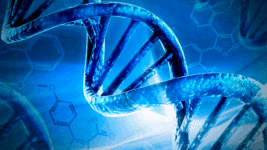Scientists have unlocked a crucial part of the mystery as to how our DNA can replicate and repair itself, something which is essential for all life forms.
The new research, conducted by leading scientists at the University of Sheffield in the UK, has revealedhow branched DNA molecules are removed from the iconic double-helical structure, a process which scientists have been looking to unlock for over 20 years.
Jon Sayers, Professor of Functional Genomics at the University of Sheffield
Branched DNA features in several episodes of the X-Files as Agent Scully suspects aliens inserted it in her blood. In reality, far from being of alien origin, branched DNA is formed every day in our bodies. It happens every time our cells divide. These branches are essential intermediates formed during the process of copying our DNA
The interdisciplinary team from the University’s Departments of Infection, Immunity and Cardiovascular Disease, and Molecular Biology and Biotechnology captured never-before- seen snapshots of the molecular events in incredible detail.
They show how Flap EndoNuclease enzymes (FENs) trim branched DNA molecules after cells have divided.
The scientists found the FEN threads the free end of thebranch through a hole in the enzyme before slidingalong to the trunk where it acts like a pair of molecular secateurs, trimming the branch and restoring the iconic double-helix.
The team made the discovery using the Diamond Light Source – the UK’s synchrotron which works like a giant microscope harnessing the power of electrons to produce bright X-ray light which scientists can use to study anything from fossils and jet engines to viruses and vaccines.
Jon Sayers, Professor, Functional Genomics at the University of Sheffield
Because DNA replication is essential for all life forms, understanding how it works at a molecular level provides insight into one of the most basic cellular processes common to all life. The enzymes that carry out this process are sometimes involved in cancer. They have been linked to tumour progression and mutation, so this discovery could pave the way for better diagnostics or new drugs.
Results of the pioneering study were published on Monday in Nature Structural and Molecular Biology.








